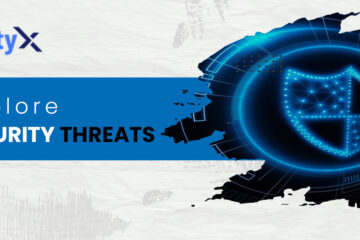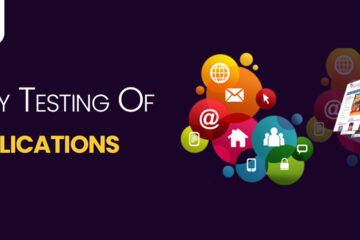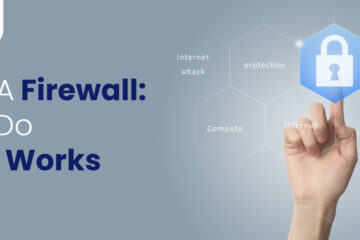25 COMMON CYBER WORDS THAT YOU NEED TO KNOW
The topic of cyber security is sweeping the world by storm with some of the largest and most advanced companies in the world falling victim to cyber-attacks in just the last 5 years. When it comes to being a cybersecurity professional, you not only have to have the knowledge to do the job but also the appropriate cyber words vocabulary. This is hardly a surprise since whenever a new field of expertise arrives on the scene, it inevitably spawns new words, acronyms, and phrases.
Well, as long as computers exist, we are at risk of having our digital data compromised and manipulated. However, living in the digital age is not all that scary especially if you know what you’re doing. It’s only daunting because we don’t have the right solution fight against cybercrimes.
Though if you know the right cyber words, you can completely ace the situation and get rid of cyber threats or reduce the risk within the real time. Wonder why you need to learn these cyber words? Well, it’s great if you are cyber security expert. But if not then these cyber security words can help you understand and identify the affected areas.
WHAT ARE THE COMMON CYBER WORDS?
Regardless of your role in an organization, this glossary of cybersecurity terms was compiled for everyone from the security professional to the general end-user. Here, you’ll find definitions of terms commonly used in the security industry. Uncover knowledge areas in which you excel and where you want to expand.
-
IP ADDRESS
An internet version of a home address for your computer, which is identified when it communicates over a network; for example, connecting to the internet (a network of networks).
EVERYTHING YOU NEED TO KNOW ABOUT THE CIA TRIAD
-
EXPLOIT
A malicious application or script that can be used to take advantage of a computer’s vulnerability.
-
BREACH
The moment a hacker successfully exploits a vulnerability in a computer or device, and gains access to its files and network.
-
FIREWALL
A defensive technology designed to keep the bad guys out. Firewalls can be hardware or software-based.
-
MALWARE
An umbrella term that describes all forms of malicious software designed to wreak havoc on a computer. Common forms include: viruses, Trojans, worms and ransomware.
HOW FREQUENT DO FINGERPRINTS CHANGE?
-
VIRUS
A type of malware aimed to corrupt, erase or modify information on a computer before spreading to others. However, in more recent years, viruses like Stuxnet have caused physical damage.
-
RANSOMWARE
A form of malware that deliberately prevents you from accessing files on your computer – holding your data hostage. It will typically encrypt files and request that a ransom be paid in order to have them decrypted or recovered.
-
TROJAN HORSE
A piece of malware that often allows a hacker to gain remote access to a computer through a “back door”.
-
COMPUTER WORM
A piece of malware that can replicate itself in order to spread the infection to other connected computers.
-
BOT/BOTNET
A type of software application or script that performs tasks on command, allowing an attacker to take complete control remotely of an affected computer. A collection of these infected computers is known as a “botnet” and is controlled by the hacker or “bot-herder”.
HOW MUCH SECURITY DOES A RETINAL SCAN OFFER?
-
DDOS
An acronym that stands for distributed denial of service – a form of cyber-attack. This attack aims to make a service such as a website unusable by “flooding” it with malicious traffic or data from multiple sources (often botnets).
-
PHISHING OR SPEAR PHISHING
A technique used by hackers to obtain sensitive information. For example, using hand-crafted email messages designed to trick people into divulging personal or confidential data such as passwords and bank account information.
-
ENCRYPTION
The process of encoding data to prevent theft by ensuring the data can only be accessed with a key.
-
BYOD (BRING YOUR OWN DEVICE)
Refers to a company security policy that allows for employees’ personal devices to be used in business. A BYOD policy sets limitations and restrictions on whether or not a personal phone or laptop can be connected over the corporate network.
-
PEN-TESTING
Short for “penetration testing,” this practice is a means of evaluating security using hacker tools and techniques with the aim of discovering vulnerabilities and evaluating security flaws.
THE BEST INFORMATION SECURITY AUDIT CHECKLIST TO HELP YOU THRIVE
-
ANTIVIRUS
It is a software that scans a device or a network to detect security threats, alert you, and neutralize malicious code.
-
AUTHENTICATON
Authentication is a method of how a user can prove his/her identity to a system. It can be a password, a fingerprint, a face scan.
-
BLACKLIST
Blacklist is a list of emails or other service providers that spread spam messages. Blacklists help users and companies to prevent the flood of unwanted messages.
-
BACKUP
A copy of physical or virtual data so in case they are being deleted or lost user could easily recover it. Works as a part of a data loss prevention plan.
-
CLOSED SOURCE
It is a proprietary technology whose copyright hides its source code and forbids its distribution or modification. The examples of closed source commercial software are Skype, Java, Opera.
WHAT IS INFORMATION RISK MANAGEMENT? UNDERSTAND IT BETTER!
-
CLOUD
Cloud computing recourses that make it available to access your files and services through the internet from any point in the world. It is possible thanks to a network of computers that provide storage and computing capabilities by the request.
-
DATA LOSS PREVENTION (DLP)
Data Loss Prevention comes with the complex of security measures, related to detecting and preventing data loss and cyberattacks. DLP is included in the organization policy, but individuals must also use this strategy to keep all data safe during ransomware or malware attack.
-
RANSOMCLOUD
It is a special type of ransomware, designed to encrypt cloud emails and attachments.
-
ROOTKIT
Rootkit is a type of malware that is used to seep into the system and steal company information. It can be very thick to detect because the malware gains control over the operating system and disguises itself. Some companies detect data leaks after months or even years.
-
SPYWARE
It is a malware that spies on the computer to collect the information about a product, a company, a person. The goals can be different – to sell this information to those who may benefit from it, like the advertisers, competitors, data companies; to obtain the banking information and passwords, and so on.
IN CONCLUSION
Whether you’re embarking on a cybersecurity journey by understanding essential defensive methods or expanding to product-specific training, Securityx offers the right cyber-security services to help you excel.



0 Comments